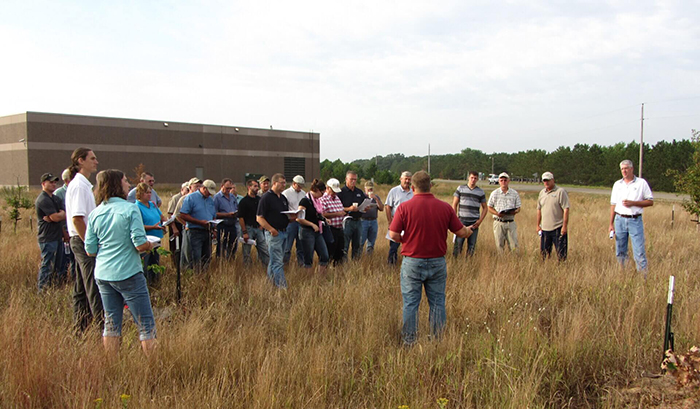Soil and Water Conservation Districts: Protecting Minnesota for Generations
News | Published on November 28, 2023 at 11:31am EST | Author: frazeevergas
0
Through technical education, technical assistance, and financial aid, local Soil and Water Conservation Districts can help establish and improve conservation projects.
By Brogan Ludwig
West Central Initiative
Soil and Water Conservation Districts are a way Minnesota’s natural resources can be available for the future. Through technical education, technical assistance, and financial aid, your local SWCD can help you in your conservation project.
In the late 1920s and early 1930s, abnormally dry and hot weather conditions decimated crops across Minnesota. Unsustainable farming practices of the era fueled large-scale wind erosion. Strong wind easily formed parched soil into dust and small ponds into mud. This long-term drought, known as the Dust Bowl, tanked the economic, social, and natural landscapes of Minnesota.
To ensure the use of soil for generations to come, Minnesota enacted state statue 103C in 1938, allowing Soil and Water Conservation Districts to form as local government units. A Soil and Water Conservation District (SWCD) focuses on the sustainable use of our local soil and water resources. They partner with landowners, counties, cities, townships, and federal agencies to implement best land management practices. SWCDs teach communities, provide technical assistance, and assist financially for eligible projects.
Planning
A SWCD board usually has five locally elected supervisors, each representing a nominating district. Board members serve a four-year term, setting overall policy, overseeing long-term projects, and working with staff on such projects. Districts are usually set by counties, with some exceptions including Otter Tail County. Because Otter Tail County is so large and varies in landscape, there is a west branch, based out of Fergus Falls, and east branch, based out of Perham.
A local planning effort, called Comprehensive Watershed Management Plan formally known as the Local Water Plan, provides a blueprint for the work done by a SWCD. These plans determine resources, concerns, needs, and goals of the district. Because Minnesota varies in land types, plans usually differ across districts. The work done in the southwest may focus on agricultural management practices, whereas the northeast may focus on forestry practices. In west central Minnesota, the focus is around shorelines and agricultural practices.
Education
Seventy-eight percent of land in Minnesota is privately owned. Thus, a large part of SWCD plans revolve around voluntary land conservation efforts. Education about local resource issues is a large part of SWCDs’ work. Examples of outreach include presenting to schools or special interest groups, hosting annual workshops, giving tours of completed projects, and connecting landowners and producers.
Outreach also includes blog posts like this one, informing people about tools and happenings at your local SWCD office.
Aaron Larsen, District Manager at West Otter Tail SWCD, says that word of mouth is the best advertisement.
“We work with one landowner, and a different landowner sees the finished project,” Aaron said. “Then they come in with, ‘Hey, what did my neighbor do? Can I do that?’ And that’s how our workflow goes, and that used to keep us busy.”
Technical assistance
Along with education, SWCDs provide technical assistance to landowners interested in conservation projects, addressing issues like structural erosion. A regional SWCD can tailor each project to a specific landowner, finding the correct solution to challenges. Examples of different types of technical assistance include:
• Helping landowners create crop rotations.
• Advocating for cover crops.
• Providing seeding plans for native grass.
• Planting pollinator habitat.
• Creating forest stewardship/tree planting plans.
• Designing a rain garden.
• Working on shoreline planting/stabilizing.
• Guiding landowners on when to irrigate crops.
• Assisting the development of wildlife habitats.
• Surveying and designing erosion control practices.
Some SWCDs sell trees for conservation practices and native grass seed to the public. Trees typically became available for purchase in December/January, with trees arriving around April/May. Click here to see where/when to buy trees from your local SWCD office.
Future generations
Along with technical assistance and education, SWCDs can also provide financial assistance to eligible projects on private land. There is commonly a cost share between 50-75 percent for projects that fall under the scope of SWCD work. If you have a question about whether a project is eligible for financial assistance from your local SWCD, check out your local office’s website.
Conserving soil and water takes time, money, and dedication, and SWCD are here to help us ensure the continual use of land and water for future generations. Through education, technical assistance, and financial aid, SWCD makes it easier to protect natural resources. As weather patterns continue to be more erratic, we need to be mindful of the use of our environment. If we aren’t, we may be headed towards another dust bowl.
Editor’s Note: Brogan Ludwig is the ACC AmeriCorps member for West Central Initiative. His year of service includes working on the Climate Action Newsletter and Climate Action outreach. Brogan graduated from Concordia College in May. He lives outside his hometown, Hawley.

